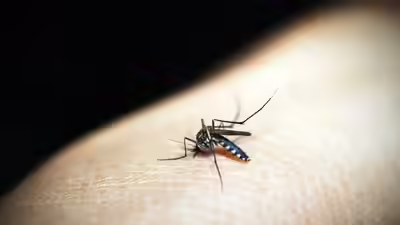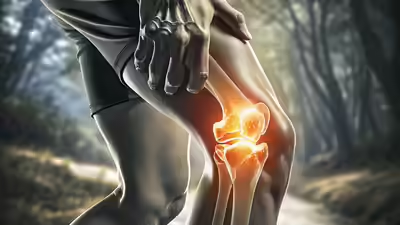Cerebral malaria: Know the key symptoms, life-threatening complications, and how to prevent it |

Malaria is one of the most serious infectious diseases worldwide, caused by protozoan parasites of the Plasmodium genus. Among these, Plasmodium falciparum is the most dangerous species, leading to the most severe cases and the highest mortality, particularly in sub-Saharan Africa. The infection is transmitted primarily through the bite of an infected female Anopheles mosquito, though blood transfusions, organ transplants, and congenital transmission can also spread the disease. Cerebral malaria, a severe complication of P. falciparum, affects the brain and other vital organs, resulting in neurological symptoms such as coma, seizures, and altered consciousness. Early detection and prompt treatment are essential to prevent fatalities and minimise long-term complications, making awareness and timely medical care crucial in affected regions.
Understanding cerebral malaria in children and adults
Cerebral malaria is a life-threatening complication of Plasmodium falciparum malaria, defined by altered consciousness or coma that lasts more than 30 minutes after a seizure. However, even less severe neurological symptoms, including drowsiness, confusion, disorientation, or agitation, should prompt urgent medical attention. According to a study published in The Nutrients, cerebral malaria is relatively rare in adults but can develop in about 1% of children infected with P. falciparum. Low transmission areas may see higher incidences among older children and adults. The condition arises when parasites sequester in the brain’s microvasculature, causing inflammation, impaired blood flow, and tissue damage.
Causes of cerebral malaria
Humans acquire malaria primarily through bites from infected female Anopheles mosquitoes. In addition, malaria can spread through:Blood transfusionsOrgan transplantsNeedle-sharingCongenital transmission from mother to childOnce infected, malaria can manifest as simple or severe disease. Severity depends on the individual’s immune status and the endemicity of malaria in the region. In high-endemic areas, older children and adults often develop partial immunity, whereas young children are more susceptible to severe forms, including cerebral malaria.
Symptoms of cerebral malaria
Cerebral malaria presents with a combination of neurological and systemic symptoms:Neurological manifestations:
- Coma or prolonged unconsciousness
- Drowsiness and lethargy
- Confusion, disorientation, delirium, or agitation
- Abnormal eye movements: nystagmus, sustained deviation, disconjugate gaze
- Abnormal posturing: decerebrate or decorticate rigidity, opisthotonos
Seizures:
- Fixed jaw closure and teeth grinding
- Electroencephalographic abnormalities
Non-neurological symptoms:
- Hepatosplenomegaly (enlarged liver and spleen)
- Jaundice
- Pulmonary oedema
- Renal dysfunction
- Severe anaemia and pallor
- Hypoglycaemia and hypotension
- Bleeding and coagulopathies
Malignant retinopathyMalignant retinopathy is a diagnostic hallmark of cerebral malaria, caused by parasite sequestration in the brain.Key retinal signs include:
- Retinal whitening
- Vessel changes
- Retinal haemorrhages
- Papilledema
These ocular signs help differentiate cerebral malaria from other encephalopathies common in malaria-endemic areas.
Essential supportive care for managing cerebral malaria complications
Caring for patients with cerebral malaria requires comprehensive supportive measures to manage the various complications that can arise. Patients in a coma may need mechanical ventilation to maintain proper breathing, while seizures are often controlled with anticonvulsant medications. Maintaining fluid and electrolyte balance is critical, as the disease can disrupt normal body functions, and blood transfusions may be necessary in cases of severe anaemia. Because cerebral malaria often affects multiple organ systems, a holistic approach to care is essential to stabilise the patient, prevent further complications, and support recovery alongside antimalarial treatment.
Prognosis and recovery tips
Survivors often recover rapidly and completely, but some may experience lingering neurological symptoms, including:
- Psychosis
- Cranial nerve lesions
- Extrapyramidal tremor
- Ataxia
- Polyneuropathy
- Recurrent seizures
- Long-term monitoring is crucial to ensure full neurological recovery and prevent complications.
Tips to prevent cerebral malaria
Preventing malaria is the most effective way to avoid cerebral complications:
- Use of insecticide-treated bed nets
- Indoor residual spraying
- Prompt diagnosis and treatment of malaria infections
- Prophylactic antimalarials for travellers to endemic regions
- Vector control to reduce mosquito populations
- Awareness and timely intervention save lives, particularly in children and vulnerable populations.
Disclaimer: This article is for informational purposes only and should not be considered medical advice. Please consult a healthcare professional before making any changes to your diet, medication, or lifestyle.Also read | 8 homemade drinks for kidney health and urinary wellness: Natural recipes to detox and support functioning





